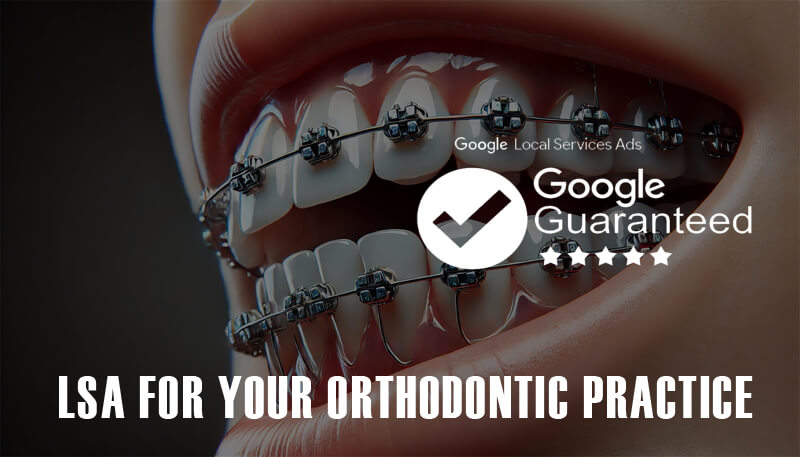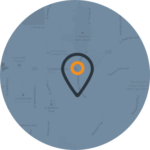Local Service Ads (LSA) for Orthodontic Practices
Are you an orthodontist or practice manager trying to figure out how to get more patients through Local Service Ads (LSAs)? You’re not alone. Many orthodontic practices are struggling to unlock the full potential of LSAs. Whether you’re uncertain about setup, budget, or how to optimize your profile, this guide is here to break it down in a simple, actionable way. With the right strategy, LSAs can drive high-quality local patients to your door — and I’ll show you how.
Start with the Right Setup for Your Local Service Ads
The first thing you need to get right is the setup. LSAs work hand-in-hand with your Google My Business profile, so make sure that your Google profile is polished and complete. This is the foundation. All your key details—like business hours, phone number, and address—should be accurate. The more detailed, the better. Then, you’ll go through the LSA orthodontist verification process, where you’ll submit documents like your licenses and insurance to prove you’re legit. This screening process includes:
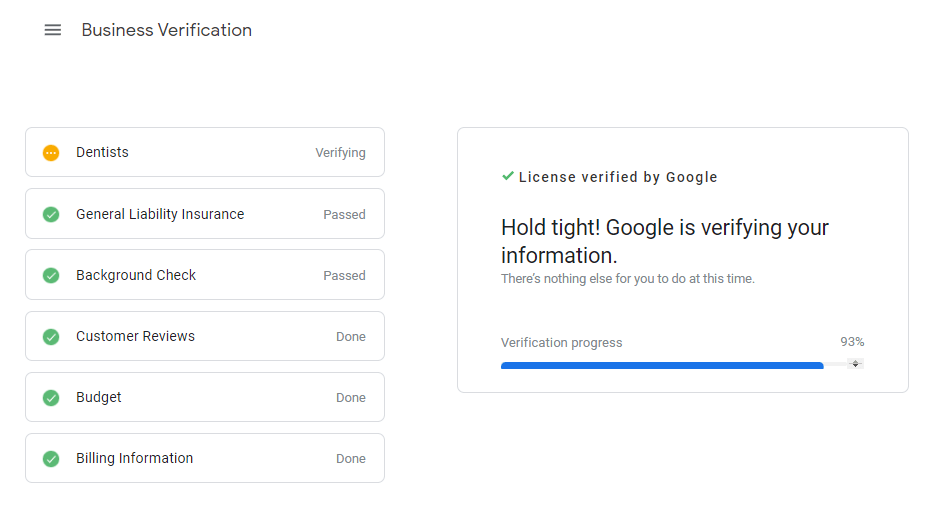
- License verification: Proof of your orthodontic license.
- Insurance verification: Proof of general liability and malpractice insurance.
- Background checks: Google conducts background checks on the practice’s owner and relevant employees.
Once these steps are completed, your practice earns the “Google Screened” badge, which adds credibility and trust for potential patients searching online.

Action Step: Complete your Google My Business profile fully before setting up your LSAs. Missing details can result in lower visibility in searches. Then, tackle verification ASAP—delays can keep your ads from going live.
How Google’s Lead Score Affects Your LSA Ranking
An important aspect of LSAs is how they appear in search results. When a user searches for something like “orthodontist near me,” your LSA will show up at the very top of the results—above even traditional pay-per-click (PPC) ads. However, where your ad appears is influenced by Google’s lead score, which is determined by several factors:
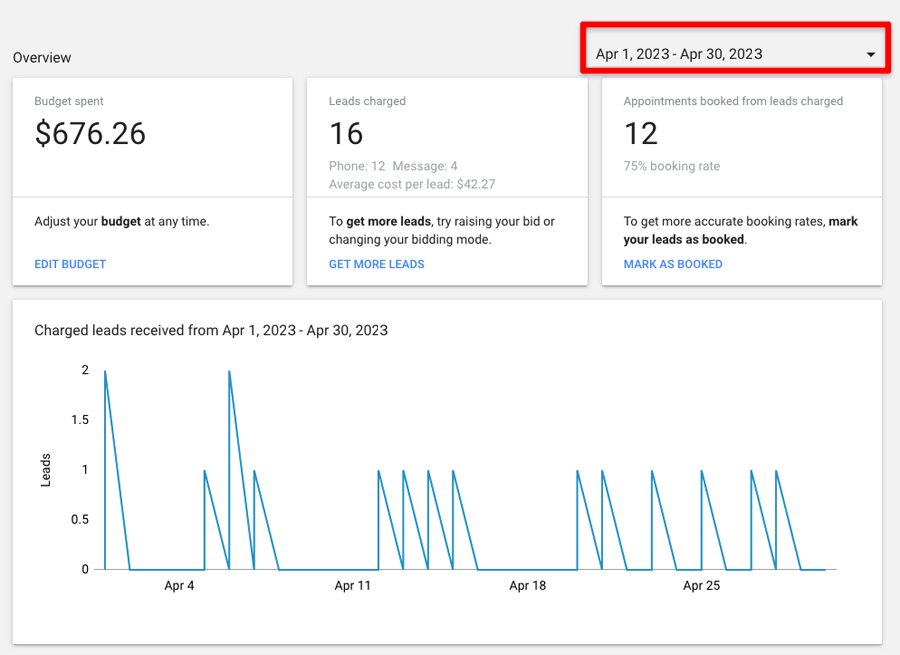
- Response rate: How quickly your practice responds to leads through calls or messages.
- Review rating: Your average rating and the number of reviews on Google.
- Review rate: How frequently your practice collects reviews from patients using LSAs.
- Scheduling rate: The percentage of leads that are converted into scheduled appointments.
- Complaints: Negative feedback can lower your lead score, while positive engagement improves it.
- Lead dispute rate: Excessive disputes over lead quality can negatively affect your lead score.
Action Step: Keep response times fast, encourage patients to leave reviews, and work on converting as many leads as possible into appointments. These factors will help you rank higher in local searches.
Define Your Service Area and Orthodontic Services
It’s important to think about where your patients are coming from. LSAs allow you to define your service area, which means you can pinpoint exactly which regions will see your ads. But don’t go overboard—more isn’t always better. Focus on the places where your patients live or work. If you target too broad an area, you’ll end up with leads who are unlikely to travel to your office.
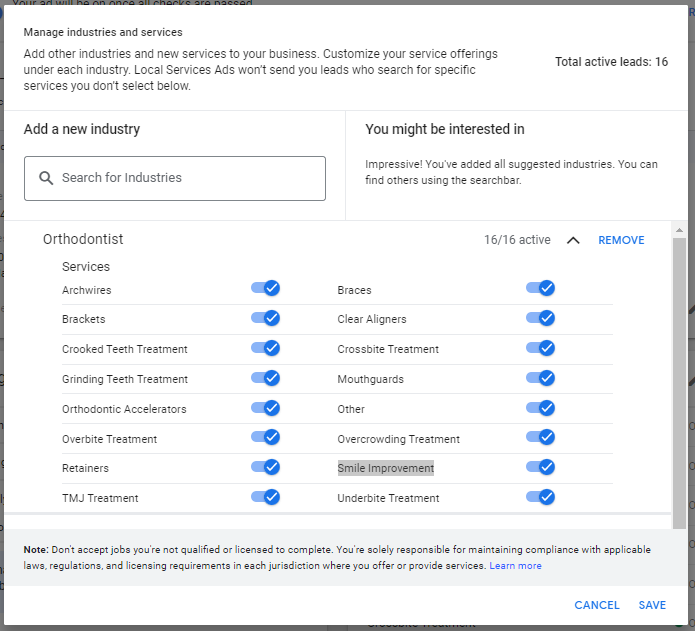
Next, list your orthodontic services for ads carefully. LSAs can support a variety of orthodontic treatments, so make sure to highlight those most important for your practice. For example:
- Braces (traditional and clear aligners)
- TMJ treatment
- Retainers
- Overbite and underbite correction
- Orthodontic accelerators
This makes LSAs highly customizable to your practice’s specific focus areas.
Best Practices for Service Area and Services:
- Define a service area that makes sense for your patient base.
- Focus on core services like braces, Invisalign, or pediatric care.
- Use precise service descriptions with keywords like “orthodontist near me” and “braces.”
Action Step: Set a service area that makes sense for your patient base. When listing services, think about what your patients need most. Target the services you want to fill appointments for.
LSAs: Paying for Phone Calls, Not Just Clicks
The most powerful aspect of LSAs is that they prioritize phone calls over clicks. Unlike traditional pay-per-click (PPC) ads, LSAs are pay-per-lead (PPL), which means you only pay when a potential patient takes a valuable action like calling your practice or booking an appointment. This gives you a direct and efficient way to connect with patients who are ready to take action.
For orthodontists, phone calls are often the most valuable type of lead because it brings you closer to booking a patient in real time. Compared to PPC models, LSAs tend to be more cost-effective because you’re paying for an actual lead instead of just website traffic.

Action Step: Make sure to track the type of leads you’re receiving (calls vs. messages) and evaluate which actions lead to better patient conversions.
Budgeting: Control Your Costs, Maximize Leads
Let’s talk money. One of the great things about LSAs is that they’re based on a pay-per-lead model, meaning you only pay when someone contacts you. This can be more cost-effective than pay-per-click (PPC) models because you’re paying for actual leads, not just clicks. LSAs typically cost between $50 and $150 per lead for orthodontic practices, but the exact amount will depend on factors like location, competition, and the specific actions that qualify as conversions (like phone calls or appointment bookings).
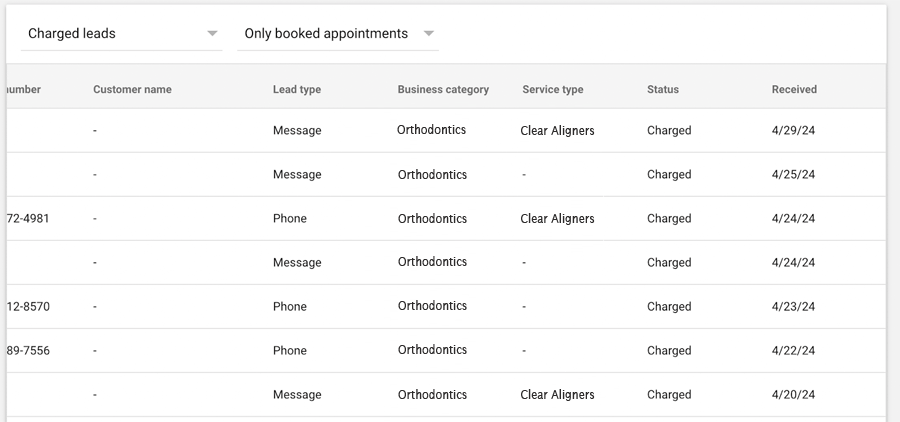
You can also control your ad spend by setting a lead volume goal. Google recommends aiming for at least 10 leads per week to see meaningful results. Additionally, you can pause your ads once you hit your monthly budget, allowing for better cost control.
Sample Budget Table for LSAs
| Ad Spend (Week) | Estimated Leads | Cost per Lead | Lead-to-Patient Conversion Rate | Total New Patients | Revenue Estimate (avg. $4,000 per new patient) |
|---|---|---|---|---|---|
| $500 | 10 | $50 | 30% | 3 | $12,000 |
| $1,000 | 25 | $40 | 35% | 9 | $36,000 |
| $2,000 | 60 | $33 | 40% | 24 | $96,000 |
Action Step: Begin with a manageable budget and track your cost-per-lead weekly. If leads are converting into patients, slowly increase your budget to capture even more opportunities.
Limitations of LSAs: No Website Access and Lead Quality
While LSAs can help you generate leads, they do come with a few limitations that orthodontists should be aware of:
- No direct website access: Patients using LSAs can’t click through to your website. Instead, they are directed to call or message you. For patients who prefer to do more online research before contacting a provider, this can be a barrier.
- Potential for lower-quality leads: Some practices report that LSAs may generate leads that aren’t as high-quality. For instance, patients may call for general inquiries without booking an appointment. However, this can be mitigated by ensuring prompt follow-ups and proper lead management.
- No call recording: Unlike some marketing systems, LSAs don’t offer built-in call recording, making it harder to assess lead quality and track follow-up success.
Action Step: While LSAs provide a strong lead generation tool, it’s important to understand their limitations. Consider using additional tools, like CRM systems, to record calls and track lead quality.
Track and Manage Leads Like a Pro
What happens when you start getting leads? Well, if you don’t respond quickly, you might lose them. Orthodontist lead management is key—patients expect a fast reply, and if they don’t get one, they’ll move on to the next orthodontist. Make it a priority to respond to inquiries within 24 hours, ideally faster. LSAs let you track how many leads you get, how many convert, and how much you’re spending on each one. Keep a close eye on these metrics.
Lead Management Tips List
- Lead Response Time Goals:
- Aim to respond to all leads within 24 hours.
- For higher conversions, consider setting up an automated response system via email or SMS.
- Best Tools for Lead Management:
- Google’s built-in LSA dashboard (track lead volume and source).
- CRM systems like HubSpot or Salesforce for managing patient follow-up.
Action Step: Set up a system for immediate follow-up with leads. Whether it’s through email, phone, or text, the faster you respond, the more likely you are to convert that lead into a patient.
Frequently Asked Questions (FAQs)
What is the difference between LSAs and regular Google Ads?
Local Service Ads (LSAs) charge per lead (PPL), meaning you only pay when someone calls or messages your practice. They are designed for local businesses and show up at the top of the search results, above pay-per-click (PPC) ads. Regular Google Ads operate on a pay-per-click model, where you pay each time someone clicks on your ad, even if they don’t contact your practice. Google Ads require more complex management with keyword bidding, whereas LSAs rely on a simpler setup focused on lead generation.
How does the Google Screened badge help my orthodontic practice?
The Google Screened badge appears next to your LSA profile and assures potential patients that your practice has passed Google’s verification process, including checks for licenses, insurance, and background screening. This badge adds an extra layer of trust and helps differentiate your practice from others in the area.
What happens if I don’t respond to leads quickly?
Response time plays a big role in your lead score, which affects how prominently your LSA appears in search results. If you don’t respond quickly, your lead score could drop, meaning your ads may not appear as often, reducing the number of potential patients reaching out.
Can I dispute a lead if it doesn’t meet my criteria?
Yes, you can dispute a lead if it doesn’t meet your criteria—such as if the caller was outside your service area or wasn’t actually looking for orthodontic services. However, disputing too many leads can negatively impact your lead score, so it’s important to only dispute valid cases.
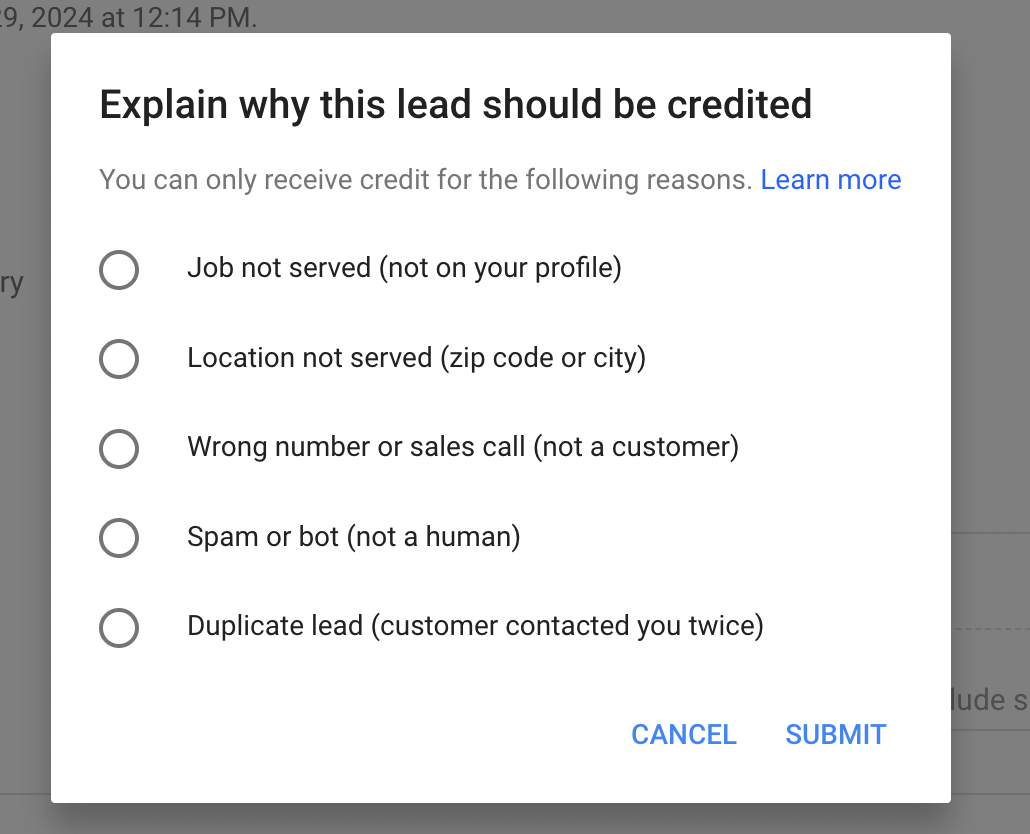
How can I track the success of my LSAs?
You can track the success of your LSAs by monitoring metrics like the number of leads you receive, response times, conversion rates (how many leads turn into patients), and your overall cost per lead. Google provides a dashboard to help you view these insights, and using a Customer Relationship Management (CRM) system can help with further tracking and managing lead follow-ups.
Are LSAs more cost-effective than other types of advertising?
LSAs are often more cost-effective than pay-per-click ads because you only pay for actual leads (people who contact you) rather than clicks that may not convert into patients. However, the effectiveness depends on your location, competition, and how well you manage lead follow-ups.
Can I run LSAs for multiple practice locations?
Yes, you can run LSAs for multiple locations. Each location will need its own Google My Business profile and must go through the verification process. This allows you to target specific areas with ads that are localized to those locations.
Take Control of Your Lead Generation with Local Service Ads
Running Local Service Ads might seem like a lot, but if you break it down into steps, it’s manageable—and more importantly, it works. Make sure your profile is optimized, manage your budget wisely, track your results, and don’t forget to ask for reviews. LSAs can be the key to transforming how potential patients find your orthodontic practice.
At Lucid Crew, we specialize in maximizing every aspect of digital marketing for orthodontists—from Local Service Ads to Google Ads, SEO, and beyond. Whether it’s optimizing your ads or managing your entire digital strategy, we’re here to help you grow your practice with measurable results. Ready to take your marketing to the next level? Reach out today to start driving more patients to your door.
